Today we are taking a look at the Bohemian coronation jewelry and the exhibit they had at the Hrubá Skála Chateau in Bohemian Paradise. From August 3rd to September 28th, 2017, the Hrubá Skála Chateau hosted an exhibition to mark the 670th Anniversary of the Coronation of Charles IV, the Czech king.
It was a rare chance to view the Czech Coronation Jewels of King and Emperor Charles IV.

The exhibition not only focused on the crowning of their most important monarch, but also shared the phenomenon of the Czech coronation jewels in the form of a master replica of the most valuable Czech treasure.
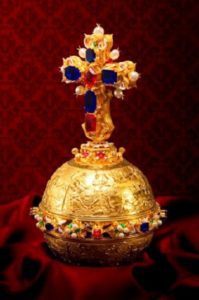 The exhibit took place in a special showcase discussing the many-year history, including various legends. The exhibition also focused on one of the most important figures of Czech and European history – the King and Emperor, Charles IV.
The exhibit took place in a special showcase discussing the many-year history, including various legends. The exhibition also focused on one of the most important figures of Czech and European history – the King and Emperor, Charles IV.
The Crown was exclusively made for Charles IV, who on September 2, 1347, was the first to be crowned King of Bohemia with it.
The exhibition’s goal was to educate the visitors on many interesting things, including the various myths and legends, that surround the famous Czech crown jewels.
For example, do you know why the jewels are exposed only on extraordinary occasions? Who is their real owner, according to Charles IV?
Charles IV was a great admirer of the medieval Czech patron St. Wenceslas, whom he considered his own guardian. He did many things in his admiration, but the most important was that he decided that the proper place for the crown was what he called “the saint’s head,” or, in other words, the gold head of the bust with St. Wenceslas’ remnants were to be kept in the dark chamber in the St. Vitus Cathedral.
It was he who imposed strict regulations saying that, together with other Bohemian coronation jewels, the crown might ONLY be used only in the coronation of Bohemian kings, and displayed to mark extraordinary occasions.
An old Czech legend says that any usurper who places the crown on his head is doomed to die a violent death within a year, as the Crown is the personal property of St. Wenceslas and may only be worn by a rightful Bohemian king during his coronation. Bohemia is no longer a kingdom. But the curse continues…
During World War II, Reinhard Heydrich, the Deputy Protector of Bohemia and Moravia, is said to have secretly crowned himself while inspecting St. Vitus’ Cathedral, and was assassinated less than a year later by the Czech resistance.
Is it possible that Reinhard Heydrich put the crown on?
Did the curse work on Reinhard Heydrich and his son?
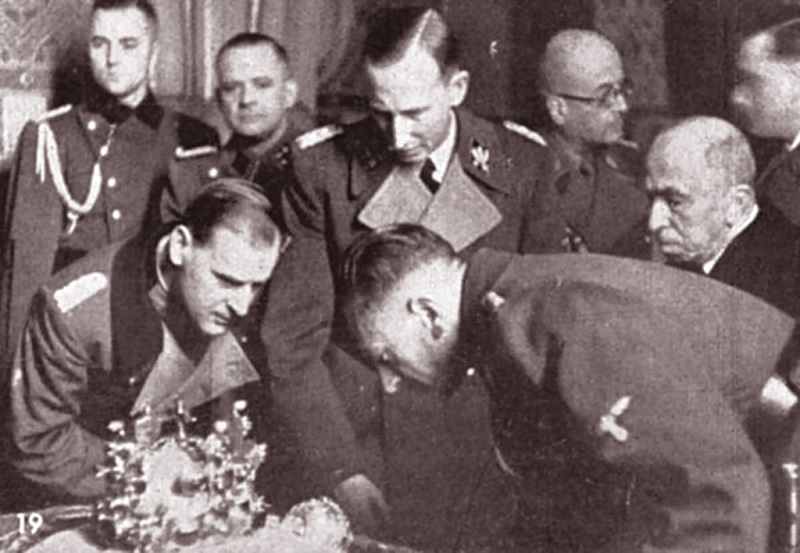
Although there is no evidence proving that Heydrich did so, the legend is widely believed. Whether or not this is true, it was held as fact by the Czech people at the time, who swore that St Wenceslas returned to protect them from the “Butcher of Prague” by having the usurper killed.
Perhaps you are wondering where the real jewels are stored?
Unlike many other European royal treasures, the St. Wenceslas Crown is not normally displayed to the public, and only a replica is shown. Along with the other Bohemian crown jewels, it is kept in a chamber within St. Vitus Cathedral accessible by a door in the St. Wenceslas Chapel. The exact location of the chamber is not known to the general public.
The entrance to the jewels is locked by seven locks whose keys are held by the President of the Czech Republic, the Chair of the Chamber of Deputies of the Parliament, the Chair of the Senate of the Parliament, the Prime Minister, the Mayor of Prague, the Archbishop of Prague, and the Dean of the Metropolitan Chapter of St. Vitus Cathedral, Prague.
Speaking of the jewels, the numerous precious stones that decorate the gold crown frame reflect the ancient crafts, trades, and beliefs of people in the Middle Ages, and recalls the coronation of the most famous of all the Bohemian kings.
The St. Wenceslas Crown is made of 21 to 22 carat (88 to 92%) gold and decorated with 91 precious stones and 20 pearls. It has a total of 19 sapphires, 44 spinels, 30 emeralds, and 1 red elbaite (variety rubellite), often falsely referred to as ruby.
The crown has two hoops and an upstanding cross at the point of intersection. There is no monde; the cross stands directly on the crown. It has a somewhat curious form due to the setting of the jewels. It consists of a golden headband with a diameter app. 19 – 20 cm and 4.8 cm wide, and divided into four pieces.
Each of these pieces is adorned with a curious fleur-de-lis composition, which rises up from the headband. All in all they each measure 12 cm in the height. Fixed to these are four arches in the form of bejewelled bands ending in a hollow cross at the apex, presumably filled with a relic, said to be a thorn from Jesus’ Crown of Thorns, which was presented to the Queen Elisabeth in 1326 by the French King.
It weighs two and a half kilos. The sapphire cross has an inset cameo in which the scene of the Crucifixion is cut.
For centuries it was said and believed that the thorn from the crown of Jesus Christ was contained within the cross of the St. Wenceslas crown. With the help of modern techniques, it was discovered that there is, indeed, a thorn within the cross.
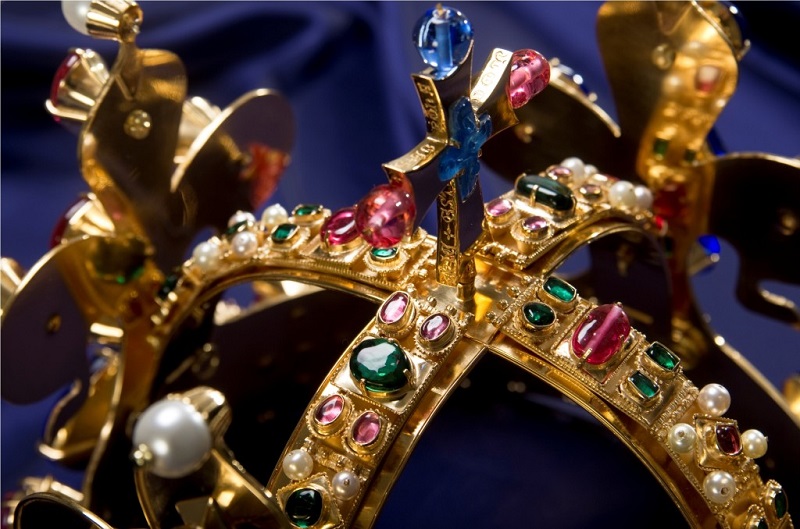
You may also be interested to know that the apple and the scepter come from completely different historical periods, and they were set by mistake.
And the crown was completely redesigned during the life of Charles IV.
The crown that Charles IV put on his head on his coronation was decorated with a total of 20 pearls and 96 precious stones. Some of them, according to the medieval Chronicle of the Church of Prague, were among the largest in the world.
However, it was forbidden to change this crown, set into law by Charles IV himself.
Since the 14th century it has remained practically unchanged.
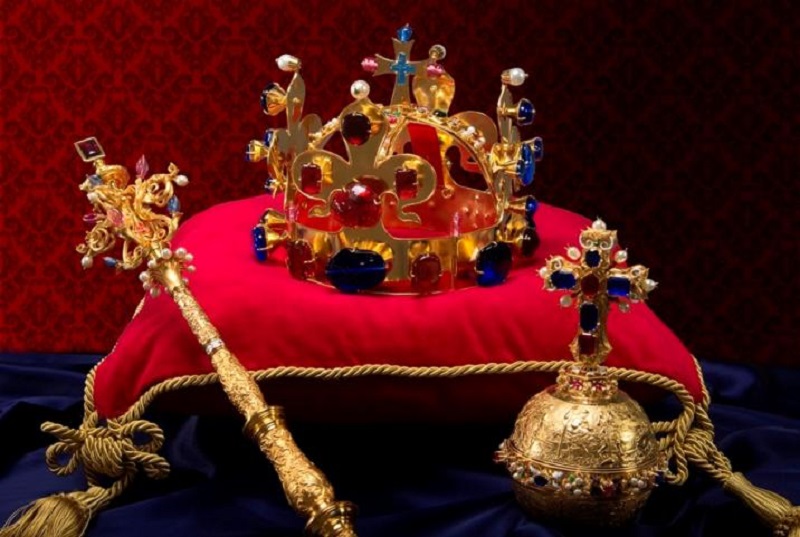
Charles IV was also a person with a great interest in magic and the occult. Each and every stone had to have an exact placement. The design was based on ancient symbolism, which means that this is one very powerful crown.
you see, Charles IV also believed in the symbolism and power of colors. The color of each gem stones symbolized medieval superstition, and linked absolute religious devotion to their pagan beliefs at the time.
The color red symbolized the blood of Christ. The deep blue color symbolized the sky. This was the reason they used so many big and blue sapphires and red rubies (the red stones are actually spinals).
Very few people are aware of how many mysteries and secrets are associated with Czech crown jewels and, in particular, the St. Wenceslaus crown.
You may be surprised to learn that the crown was never used by Prince Wenceslas, who lived in the 10th century, but it was modeled loosely on illustrations of Wenceslas in a red felt hat with an external gold framework.
It was Charles IV who dedicated the crown to Wenceslas and gave it to the state for future kings to use. It was last used for the coronation of Ferdinand V in 1836.
Most believe the crown still belongs to the immortal spirit of St Wenceslas.
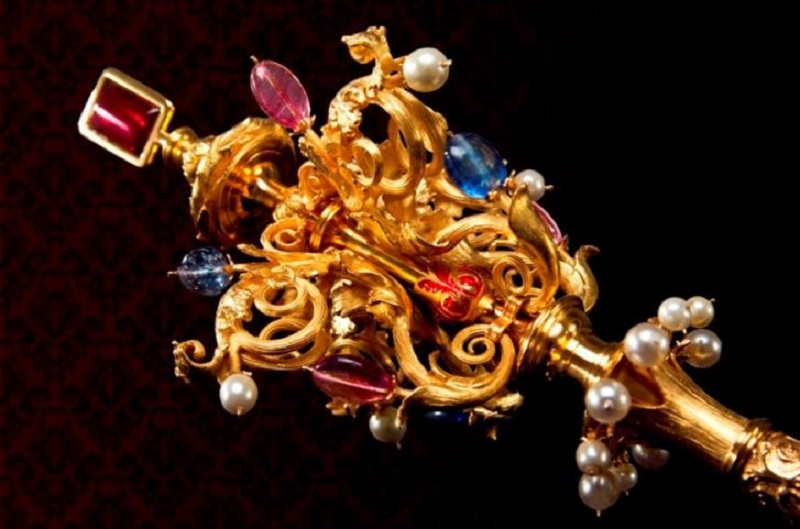
The crown was made to serve two purposes. One was to be used as the crown of the residing king and his dynasty at coronations or other likeminded occasions. If used as such it was to be returned the same day to its regular place of keeping in the Cathedral of St. Vitus, where another purpose was to serve as a reliquary for the thorn, to be kept in the new chapel of Saint Wenceslas (907 -935), which Charles IV had built in the Cathedral of St. Vitus.
As such, the crown was supposed to be placed on the head of a bust in which the skull of the saint was kept, literally crowning him with a thorn from the Crown of Thorns. In connection with this, the king composed a liturgy for a special annual feast, which was supposed to culminate in showing off the imperial treasury in the center of Prague, including the crown, thus advertising the protection of the saint of the land, the dynasty and the city of Prague.
In addition to the master replicas of jewels, they are also presenting many other thematic exhibits reminiscent of the Middle Ages, including weapons, clothing and footwear, and 3D models.
The exhibition also features some interactive features for the smallest of visitors.
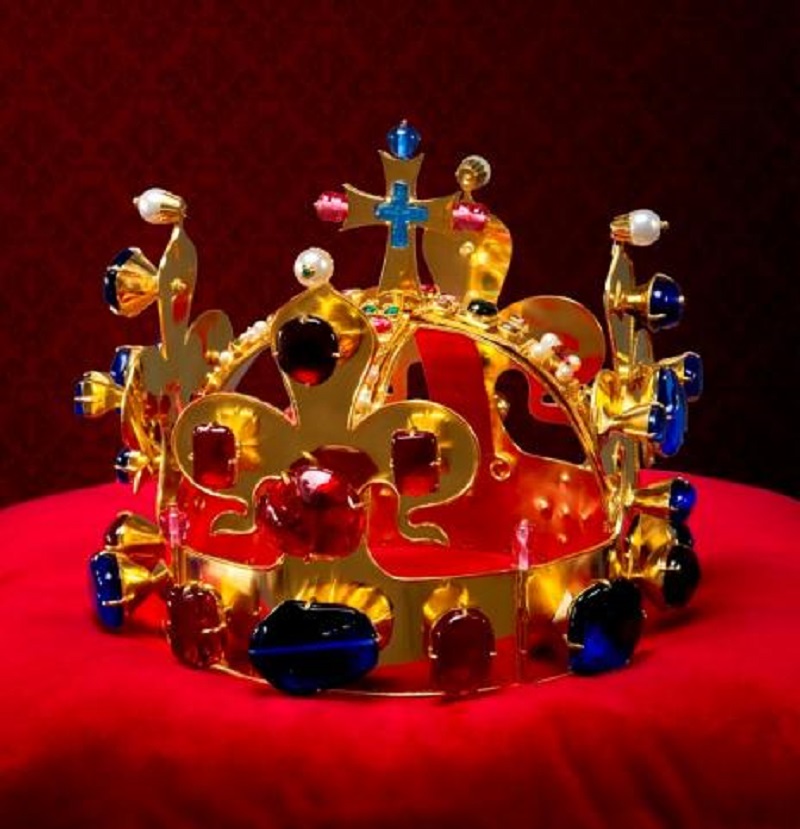
The creator of the prestigious replicas of the crown jewels is one of the best Czech and European goldsmiths, a legendary jeweler, Jiří Urban from nearby Turnov.
Turnov has made jewelry for Queen Elizabeth II and for Pope John Paul II. He’s also created replicas of the imperial crown of the Holy Roman Empire, as well as a replica of the Czech crown.
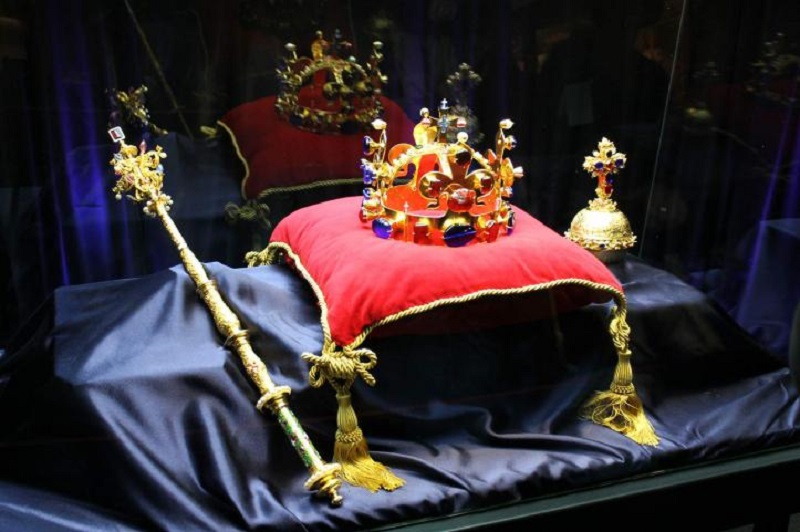
The following video shows the Bohemian Crown Jewels (Korunovační klenoty) at the Prague Castle in Vladislav Hall. You see the beautiful Crown of Saint Wenceslas, the royal orb and scepter, and nice view of the city in this short 2-minute film.
Take a look…
Learn more: http://ceskekorunovacniklenoty.cz
If you are interested in learning more, we recommend The Czech Coronation Jewels by Jan Bonek.
Thank you for your support – We appreciate you more than you know!
We know that you could spend hours, days, weeks and months finding some of this information yourselves – but at this website, we curate the best of what we find for you and place it easily and conveniently into one place. Please take a moment today to recognize our efforts and make a donation towards the operational costs of this site – your support keeps the site alive and keeps us searching for the best of our heritage to bring to you.
Remember, we rely solely on your donations to keep the project going.
Thank you in advance!
If you have not already subscribed to get TresBohemes.com delivered to your inbox, please use the form below now so you never miss another post.


















